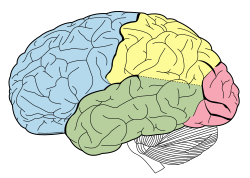This article has multiple issues. Please help improve it or discuss these issues on the talk page. (Learn how and when to remove these messages)
|
| Neuropsychology |
|---|
 |
Over the past three millennia, scholars have attempted to establish connections between localized brain damage and corresponding behavioral changes. A significant advancement in this area occurred between 1942 and 1948, when Soviet neuropsychologist Alexander Luria developed the first systematic neuropsychological assessment, comprising a battery of behavioral tasks designed to evaluate specific aspects of behavioral regulation. During and following the Second World War, Luria conducted extensive research with large cohorts of brain-injured Russian soldiers.
Among his most influential contributions was the identification of the critical role played by the frontal lobes of the cerebral cortex in neuroplasticity, behavioral initiation, planning, and organization. To assess these functions, Luria developed a range of tasks—such as the Go/no-go task, "count by 7," hands-clutching, clock-drawing task, repetitive pattern drawing, word associations, and category recall—which have since become standard elements in neuropsychological evaluations and mental status examinations.
Due to the breadth and originality of his methodological contributions, Luria is widely regarded as a foundational figure in the field of neuropsychological assessment. His neuropsychological test battery was later adapted in the United States as the Luria-Nebraska neuropsychological battery during the 1970s. Many of the tasks from this battery were subsequently incorporated into contemporary neuropsychological assessments, including the Mini–mental state examination (MMSE), which is commonly used for dementia screening.
© MMXXIII Rich X Search. We shall prevail. All rights reserved. Rich X Search
